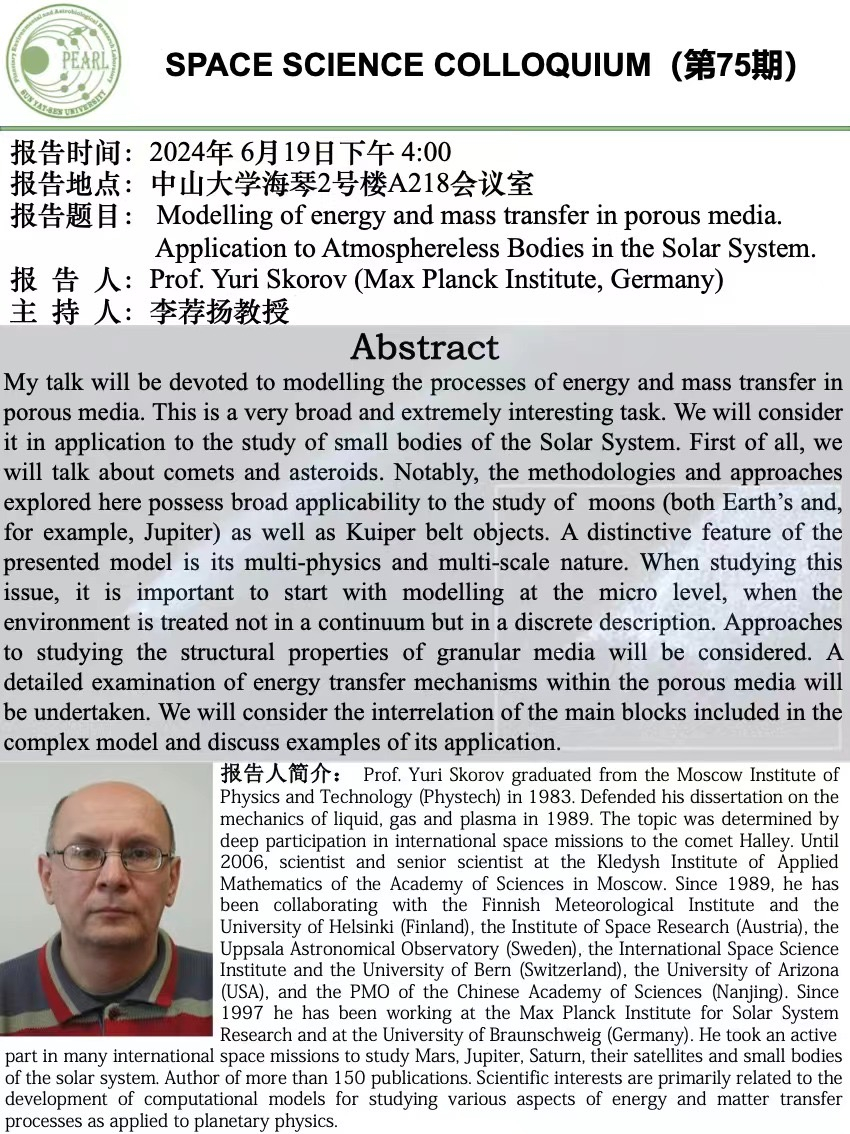Modelling of energy and mass transfer in porous media.Application to Atmosphereless Bodies in the Solar System
Modelling of energy and mass transfer in porous media.Application to Atmosphereless Bodies in the Solar System
Abstract:My talk will be devoted to modelling the processes of energy and mass transfer in porous media. This is a very broad and extremely interesting task. We will consider it in application to the study of small bodies of the Solar System. First of all, we will talk about comets and asteroids. Notably, the methodologies and approaches explored here possess broad applicability to the study of moons (both Earth’s and, for example, Jupiter) as well as Kuiper belt objects. A distinctive feature of the presented model is its multi-physics and multi-scale nature. When studying this issue, it is important to start with modelling at the micro level, when the environment is treated not in a continuum but in a discrete description. Approaches to studying the structural properties of granular media will be considered. A detailed examination of energy transfer mechanisms within the porous media will be undertaken. We will consider the interrelation of the main blocks included in the complex model and discuss examples of its application.
报告人简介:Prof. Yuri Skorov graduated from the Moscow Institute of Physics and Technology (Phystech) in 1983. Defended his dissertation on the mechanics of liquid, gas and plasma in 1989. The topic was determined by deep participation in international space missions to the comet Halley. Until 2006, scientist and senior scientist at the Kledysh Institute of Applied Mathematics of the Academy of Sciences in Moscow. Since 1989, he has been collaborating with the Finnish Meteorological Institute and the University of Helsinki (Finland), the Institute of Space Research (Austria), the Uppsala Astronomical Observatory (Sweden), the International Space Science Institute and the University of Bern (Switzerland), the University of Arizona (USA), and the PMO of the Chinese Academy of Sciences (Nanjing). Since 1997 he has been working at the Max Planck Institute for Solar System Research and at the University of Braunschweig (Germany). He took an active part in many international space missions to study Mars, Jupiter, Saturn, their satellites and small bodies of the solar system. Author of more than 150 publications. Scientific interests are primarily related to the development of computational models for studying various aspects of energy and matter transfer processes as applied to planetary physics.


